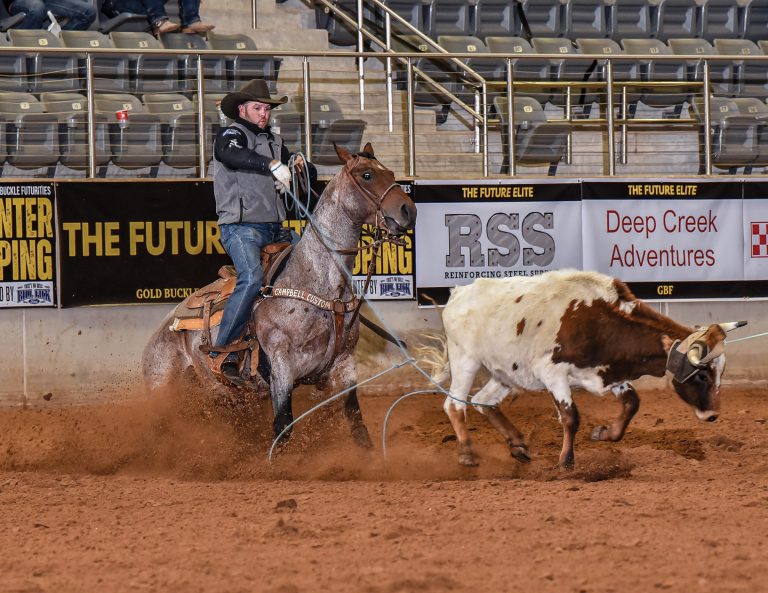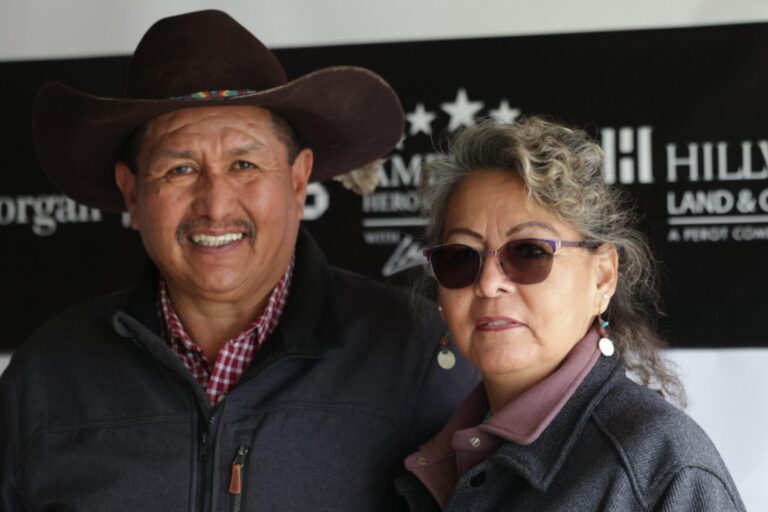Kory Koontz has stepped away from ProRodeo and is focusing his time on helping ropers improve their game across the country. He keys in on fundamentals—no matter how skilled the ropers are—and uses them to up the game at every level. With kids, teaching these core skills, whether they’re heading or heeling, will save them headaches for years to come and will help them climb the ranks of the number system.
1) Roping Fundamentals to Teach Children: Spoke Length

This photo shows an ideal spoke length. The length of your spoke is what balances your loop and determines how much tip you have. That determines the length of your top strand and bottom strand. It balances together how you swing and how you create power, and that goes into how much your tip wants to travel when you’re heeling.
2) Roping Fundamentals to Teach Children: Incorrect Spoke Length

A longer spoke will create a deader loop, which will make your tip not want to travel as much. Too short of a spoke will have far less tip control. As you grow in your roping, you will define for yourself the correct amount of spoke to give you the ideal tip control. But in this photo, I’m showing this roper what my idea of “too short” of a spoke is.
3) Roping Fundamentals to Teach Children: Distance Between Your Hands

The distance between your hands affects your ability to feed your rope to where you can feel the pull and feel both hands tied together. It’s not just swinging your rope where you can’t feel your coils against the palm of your hand with that slack in between your hands. That determines how you control your rope and how much you feed.
4) Roping Fundamentals to Teach Children: Elbow Position

In this photo, I’m showing how elbow position comes into play in the delivery controlling the bottom strand. Heading, that makes the bottom strand go under the right horn and not allow the rope to rotate too soon to cause you to miss the right horn. Heeling, that elbow being down and your bottom strand being down gets your bottom strand on the ground to create that trap.
5) Roping Fundamentals to Teach Children: Delivery

Following through doesn’t necessarily mean with your right-to-left delivery. It means getting to the end of your arm before you turn loose of your loop. If you deliver your rope out of your hand before you get to the length of your arm, you’re turning it loose too soon. It affects the rotation of the loop and it makes the loop get smaller too early. Heading, that will cause you to split the horns or cause basic misses in several different ways. Heeling, turning loose of your loop too soon will mean roping one foot or driving your tip into the dirt, which will cause a miss or a one-footer instead of hanging onto it to the length of your arm. You need to cover all the area possible for that trap to catch both feet.
BFI Champion and 22-time NFR heeler Kory Koontz is currently booking clinics for 2023, customizing his lessons for the group’s needs. Koontz’s goal is to help ropers grow in their craft, and he’s reachable at 806-789-1824.











